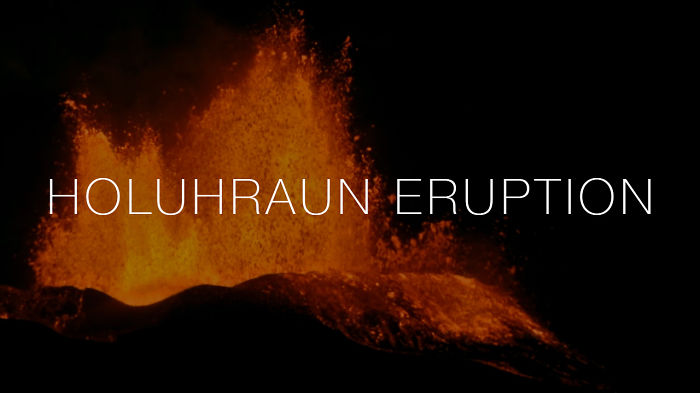Eruption in Holuhraun
Standing next to a volcano spewing lava up to 120+ meters into the air is something else, feeling the amazing powers of mother nature under your feet makes one feel so small.
Holuhraun is a lava field in Suður-Þingeyjarsýsla, Northeastern Region, Iceland. Holuhraun is in the Icelandic Highlands, north of Vatnajökull. The lava field was created by fissure eruptions. After a research expedition in 1880, the lava field was initially called Kvislarhraun. Four years later, it received its current name by the geologist and geographer, Þorvaldur Thoroddsen. Holuhraun is situated at the southern end of Ódáðahraun, which is one of the largest lava fields in the country. The main volume of the Jökulsá á Fjöllum river flows from the eastern side of Holuhraun, in the Kverkfjöll area.
Until 2014, the surface of the lava field was of an older lava flow, which had erupted in 1797. In the early hours of 29 August 2014, a small fissure eruption occurred in Holuhraun at the northern end of a magma intrusion which had moved progressively north, since 16 August, from the Bárðarbunga volcano. The progression of the magma intrusion was accompanied by an earthquake swarm. The eruption began just after midnight and stopped at 04 :00 GMT. The active fissure was about 600 m (660 yd) in length. Another fissure eruption started in Holuhraun at around 05 :05 GMT on the morning of 31 August 2014, in the same rift as the eruption which had occurred two days earlier. The eruptive fissure was estimated to be 1.5 km (0.93 mi) long. By 4 September, the total area of the lava flow was estimated at 10.8 km2 (4.2 sq mi). Two new eruptive fissures formed south of the main eruption site, on 5 September. The new fissures were substantially smaller than the older fissure. By 7 September, the lava flow had extended 11 km (6.8 mi) to the north, and had reached the main western branch of the Jökulsá á Fjöllum river. The eruption showed no visible activity in the southern fissure, on the evening of 7 September. As of 9 September, the eruption is continuing to produce lava fountains in the central craters of the northern fissure, with continuing earthquake activity.
141views
Share on Facebook



2
0